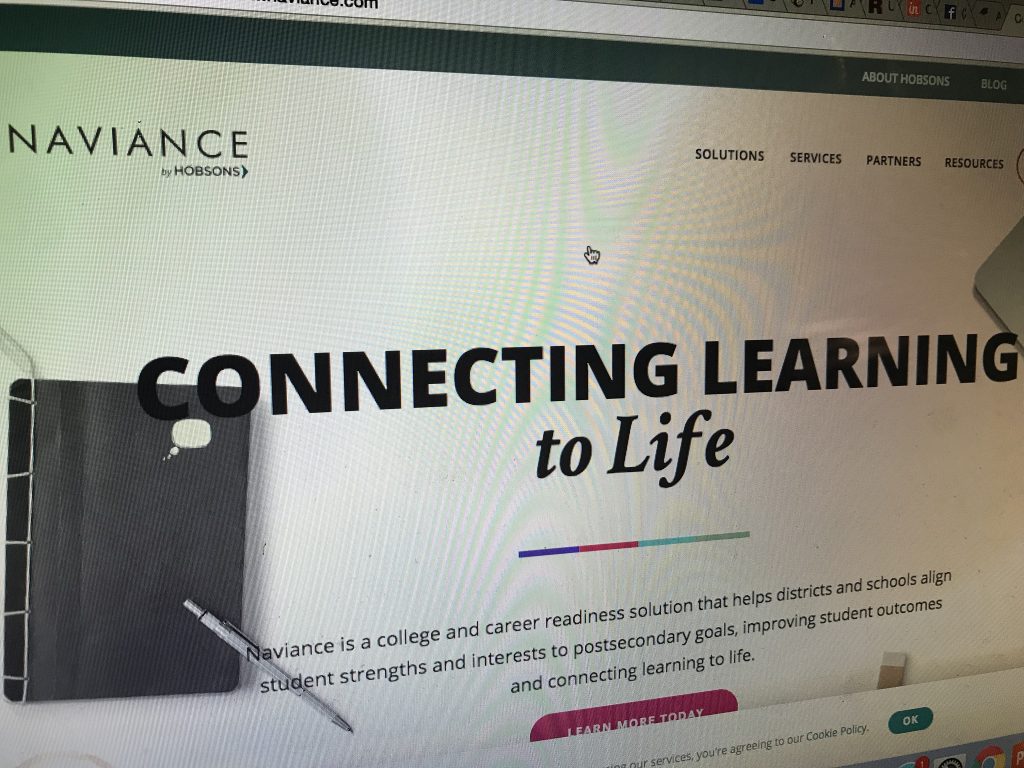Naviance: Useful Tool or Flawed System?
 By Nancy Whetstone
By Nancy Whetstone
A few weeks ago, I attended a parent meeting planned by our school district to introduce Naviance. According to its website, Naviance “improves student outcomes by helping students connect their strengths and interests to long-term goals today.”
Naviance is a college planning tool that organizes the work and research into four tabs–Colleges, Careers, About Me and My Planner.
Naviance, while new to our school district, was not new to me. My daughter and I met with her guidance counselor several months ago to discuss her class schedule for the 2017-2018 school year. He was very excited to talk to us about Naviance and gave us our log-in credentials to get started. That was in June.
My highly-motivated junior, whose mom works for a college planning company, has been on Naviance exactly once. So I did what moms are known to do. I nagged.
“I did the ‘Do What You Are’ assessment,” she reported. “I’m an INFJ.” Was this the same Myers-Briggs test I took long ago which classified me as ENFJ?
I did some digging around and discovered that the assessment is based on the highly controversial Myers-Briggs Type Indicator (MBTI) personality test. The MBTI has drawn harsh criticism from the scientific community for years. A Google search found dozens of articles debunking this personality test.
So if the personality assessment is flawed, surely there are other useful tools within Naviance that will keep Catherine on track.
The “scattergram” feature tracks acceptance rates from your child’s high school based upon GPA and standardized test scores to help prospective students gauge their likelihood of being admitted. What I love about this feature is that it gives a quick snapshot of the university including application deadline, application fee, acceptance rate and early admissions information.
However, the majority of the 257 schools listed had accepted only one student from Catherine’s high school. The Ohio State University, on the other hand, with 363 records, includes data that is all over the board. Students were accepted with ACT scores as high as 35 and as low as 11 and GPAs as impressive as 4.4 and as low as 2.2. The problem with this feature is that so much more goes into the acceptance decision–well beyond test scores and grade point average.
School administrators will need to input information over the span of years to enhance the usefulness of scattergram.
I occasionally log into the family connection page to see if she has completed any of the other assessments or entered any tasks in her planner. To date, most of the features remain untouched.
Perhaps Catherine’s lack of interest in Naviance is due to the fact that she’s a junior and the college deadlines are not staring her in the face.
“I think I will need to use Naviance my senior year when I complete the Common App, track my applications, send transcripts and provide letters of recommendation” she says.
When that time comes, we will be working closely with College Liftoff, a Columbus, Ohio-based college planning firm, to ensure Catherine selects the right school for the right price.

